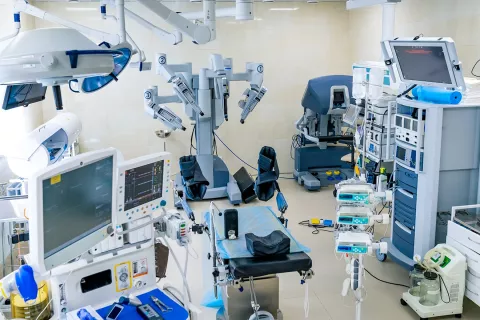
The European Union Medical Device Regulation (EU MDR) has replaced the Medical Device Directive (MDD) and the Active Implantable Medical Device Directives (AIMDD), introducing several significant changes in the regulations. One of the key elements that has been replaced is Essential Requirements (ER). ER have now been replaced by General Safety and Performance Requirements (GSPR). Although it might seem that both lay out the same requirements, GSPR lays out more stringent requirements. For instance, under GSPR, manufacturers are now required to demonstrate and analyze more clinical data. Currently there are a total of twenty-three (23) GSPRs, while there were thirteen (13) ERs under the MDD and sixteen (16) ERs under the AIMDD.
This article aims at delving deep into the changes that have occurred from ER to GSPR. Each section will focus on one (01) key change that has occurred while transitioning from the directives to the MDR.
Section I: General Requirements
ER covered the overall design and manufacturing with respect to the safety of the medical device. The chapter on general requirements covers the considerations while designing and manufacturing devices.
In GSPR, the key principle remains the same as that in ER. In GSPR, much like in ER, the first chapter talks about the safety and risks associated with devices from the design and manufacturing aspects. However, in GSPR, a very detailed description of the risks and hazards is provided. It specifies that devices should be designed in such a way that the intended performance is achieved with the utmost patient/healthcare personnel safety, and at the same time, they should be effective, whereas in the case of ER, a slight ambiguity can be observed, even though it does mention the potential adverse effects.
Further, GSPR gives an additional pointer on the risk management system. As per Annex I, manufacturers are required to plan and implement the risk management system. The annex states that this requirement should be considered a regular step, being performed throughout the lifecycle of a device. The risk management system should include:
- An implementation of a well-devised plan for risk management and documentation of the same.
- Identification and analysis of foreseeable risks posed by the intended use and probable misuse.
- Evaluation of the impact of the production phase and Post-market Surveillance (PMS) with respect to the frequency and occurrence of the hazards.
As per the evaluations and estimations of the hazard, manufacturers need to take appropriate risk elimination/control measures. However, the measures should have no significant impact on the risk-benefit ratio.
While taking the control measures, the manufacturers shall consider the technical knowledge, experience, education, training, and use environment of the intended users. Also, the users' medical and physical condition shall be considered. With respect to it, information for safety shall be provided with the device, and wherever necessary training should be provided.
In addition, GSPR also covers products without an intended medical purpose which were not covered previously in the ER under the Directives.
Section II: Design and Manufacture Requirements
This chapter emphasizes the design and performance of devices with respect to chemical, physical, and biological properties, infection and microbial contamination, and radiation. Both the GSPR and ER incorporate the choice of materials in terms of toxicity and flammability, biocompatibility, and biophysical or modeling research. In addition to it, now the GSPR also includes the impact of material and surface properties of devices. Mechanical properties of materials used reflect, where appropriate, matters such as strength, ductility, fracture resistance, wear resistance, and fatigue resistance.
The GSPR also specifically mentions the requirement for providing a justification in case of the presence of Carcinogenic, Mutagenic, Toxic for Reproduction (CMR) and/or endocrine substances. It also specifies the labeling requirements for these substances, which is not provided in the ER. Moreover, it separately incorporates the requirements in case of the presence of phthalates. In addition, now the GSPR has also covered a specific pointer on the nanomaterials as well.
The GSPR requirements for infection and contamination control of devices are quite similar to the ER in terms of requirements for the manufacturing and designing in controlled conditions. Both the annexes provide detailed guidelines on reused and sterile devices. However, the GSPR also addresses devices with a specific microbial state, which are required to be designed, manufactured, and packaged in such a way that the controlled conditions are not hampered.
Thus, with the replacement of ER with the GSPs, a lot has changed with respect to requirements for medical devices. The GSPR covers previously unaddressed areas such as products without an intended medical purpose, nanomaterials, and labeling requirements for certain substances. Overall, the GSPR reflects a more rigorous approach to ensure the safety and performance of medical devices for patients and healthcare personnel.
Do you want to know more about GSPRs under the EU MDR? Stay tuned to our page for the next release in this series or reach out to our Regulatory experts to know more. Stay informed! Stay compliant!









